By now, you might have heard about Plumb’s Pro, the robust new clinical decision support tool for veterinary teams. It’s designed to streamline patient care and help you keep moving, even on those extra busy days.
When we talk about Plumb’s Pro, we talk a lot about streamlining patient care. Wondering what that really looks like in your day-to-day practice? Let’s walk through a case using Plumb’s Pro so you can get a feel for all the ways it can support patient care—from diagnosis to discharge.
Meet your patient and pet owner
Today you’re seeing Max, a 4-year-old neutered male Weimaraner. Max is squinting, and his right eye is red.
After talking with Max’s owner, Maddy, you learn that Max has separation anxiety, which is managed with 2 mg/kg fluoxetine daily. Yesterday, Max released some of that anxiety on (ie, destroyed) the couch.
Let’s look at how Plumb’s Pro can help you get Max (and Maddy) through treatment and out the door quickly and safely, with your i’s dotted and t’s crossed.
Get your bearings on Max’s case
When you’re starting with clinical signs and want to make sure you don’t miss anything, algorithms are a great place to get the big picture of your case. For Max, you search Plumb’s for “red eye” and open the algorithm, which follows the familiar format you may recognize from the pages of Clinician’s Brief.
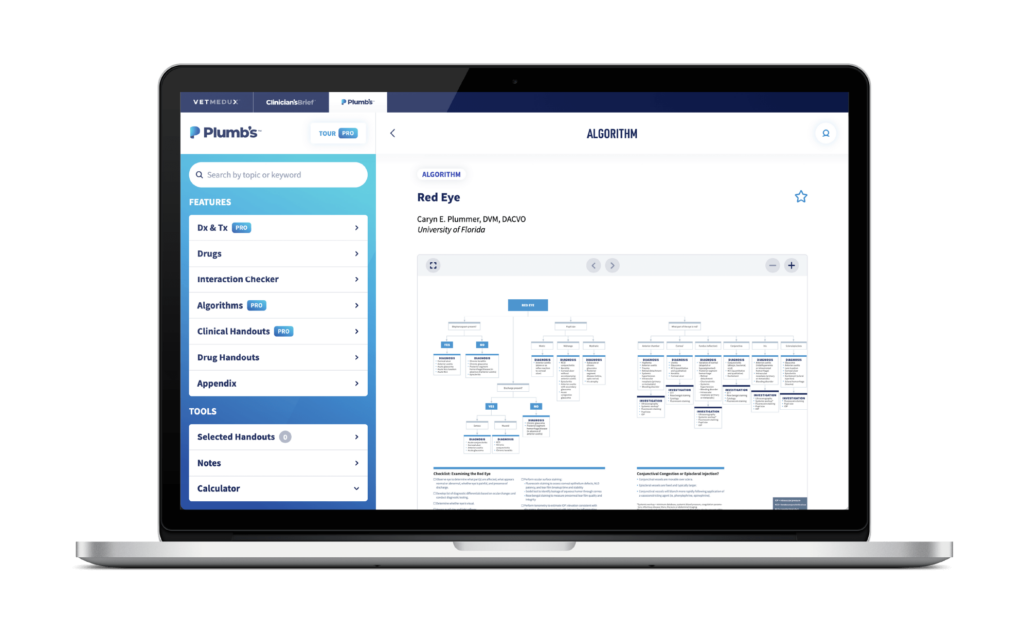
Reviewing the algorithm, you see that further diagnostics will be required. And because it’s clear Max won’t let you anywhere near that eye, you know you’ll need to sedate him. Checking his anxiety medication (fluoxetine) for interactions with potential sedatives is the next step—and it’s easy to do with the drug interaction checker.
Move forward with an informed drug choice
The drug interaction checker is the fastest way to evaluate drug-to-drug interactions and reduce risk when prescribing new medications.
Your first choice to sedate Max is acepromazine, but when you go to the drug interaction checker to determine whether it’s okay to administer with fluoxetine, you see there is a major chance for drug interaction. You then check to see if dexmedetomidine would be more appropriate and find there is moderate risk for interaction.
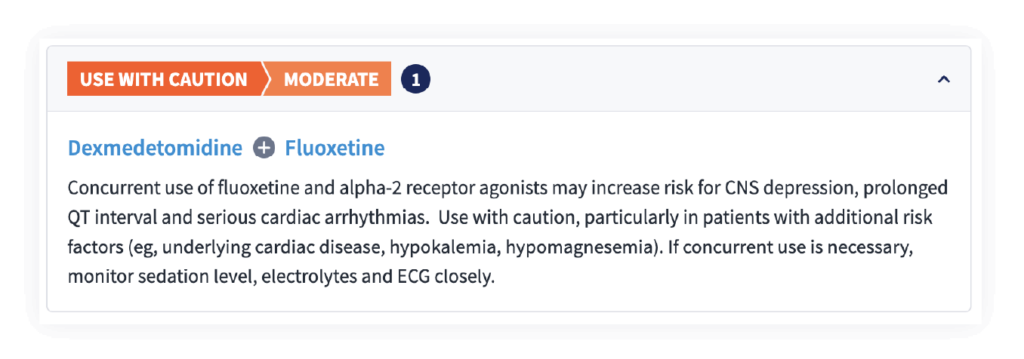
Considering its sedative effects and quick reversal, you determine dexmedetomidine is the best choice for Max and click through to the drug monograph to confirm the dosage he’ll need.
Find the appropriate dosage in seconds
In Plumb’s, each drug monograph covers a number of key details, including dosages, dosage forms, adverse effects, contraindications, and more.
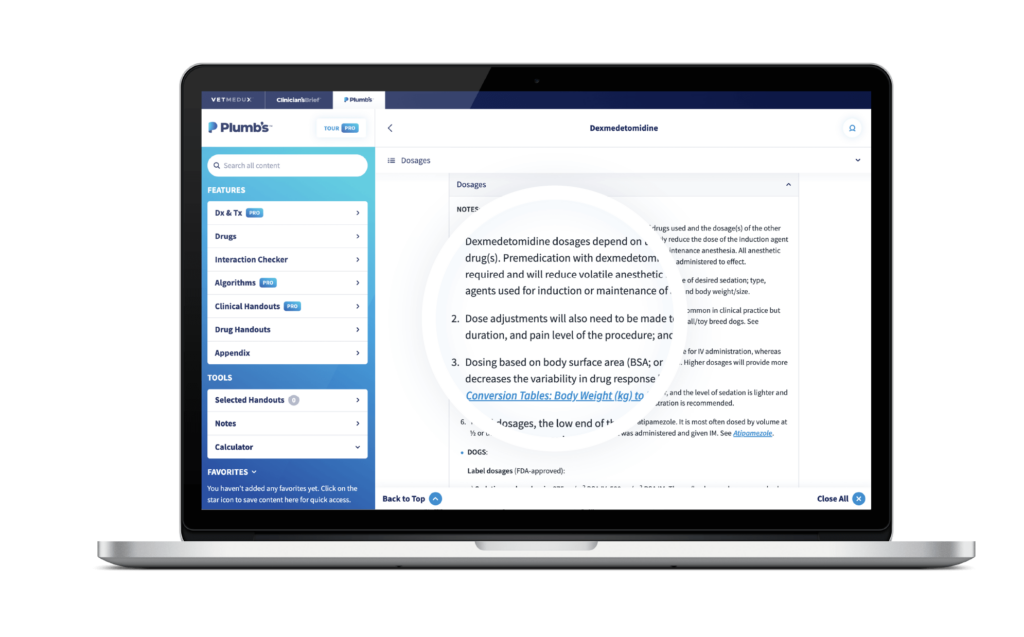
For Max, you jump straight to the dosages to select a conservative dose of dexmedetomidine, which he tolerates well, and you proceed to examine his eye.
Get practical guidance in the moment
You perform a Schirmer tear test (STT) and a fluorescein eye stain test and measure Max’s intraocular pressure.
Results from the STT are within normal limits, but his intraocular pressure is low in the right eye. The fluorescein stain test reveals a 3 mm superficial corneal ulcer in the right eye, and you remove a small foreign body (presumed to be couch fiber) and administer triple antibiotic ointment.
Then, you consider treatment options for the anterior uveitis you suspect is causing Max’s low intraocular pressure.
This is when access to Dx & Tx, the clinical monographs in Plumb’s Pro, is essential.
With Plumb’s Pro, this robust library of practical, peer-reviewed clinical monographs is always available to you from any device. These monographs provide the diagnostic and treatment information you need at the point of care—without all the searching and second-guessing.
For this case, you select the Dx & Tx monograph for anterior uveitis. Within the treatment section, you confirm that atropine is an appropriate choice for pain and decide this is the best option for Max.
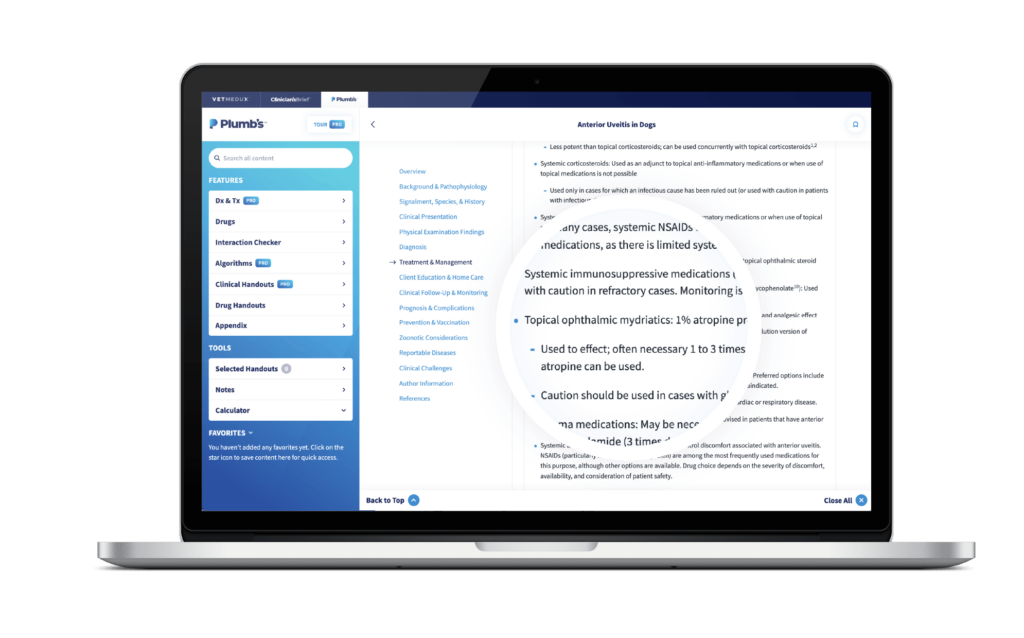
With Max treated and resting, you now want to make sure his owner has the appropriate information she needs to care for him at home.
This is simple to do with the pet owner handouts.
Ensure everyone is ready for at-home care
Plumb’s Pro has two full libraries of easily shareable handouts for pet owners:
- Drug Handouts: Up-to-date information on the medications you prescribe
- Clinical Handouts: Current guidance on common (and not-so-common) diagnoses, procedures, and preventive care recommendations
Each handout is written by general practitioners and reviewed by a DABVP-boarded veterinarian. And like all Plumb’s Pro content, our pet owner handouts are continually updated, and new handouts are added on an ongoing basis.
You know Max’s owner will need a few handouts to confidently care for his eye at home. This includes one explaining his superficial corneal ulcer as well as handouts on both his medications: the triple antibiotic ophthalmic ointment and the atropine sulfate.
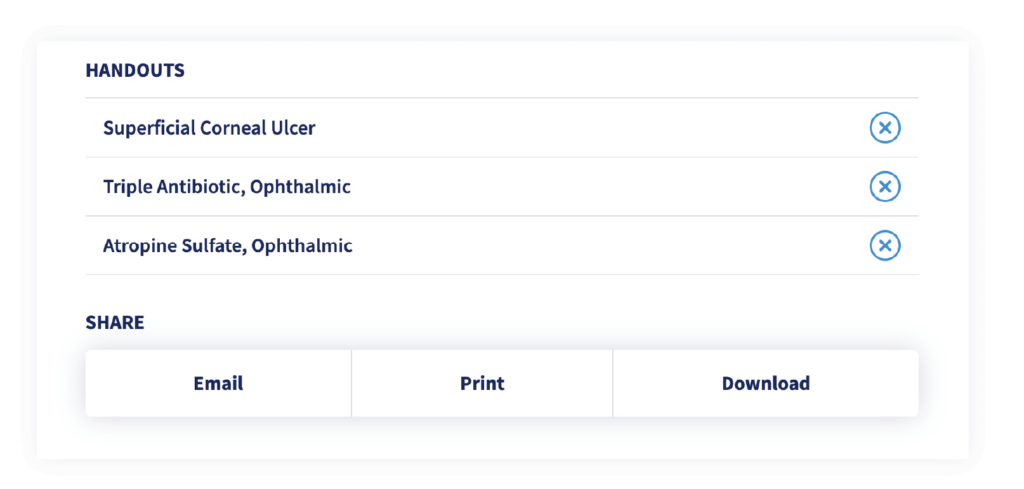
You select the handouts and choose the email option, where you add a personal message advising Maddy to keep a close eye on Max and call the practice if he isn’t improving. And you decide to quickly print the handouts, too, so Maddy has them in hand when she leaves.
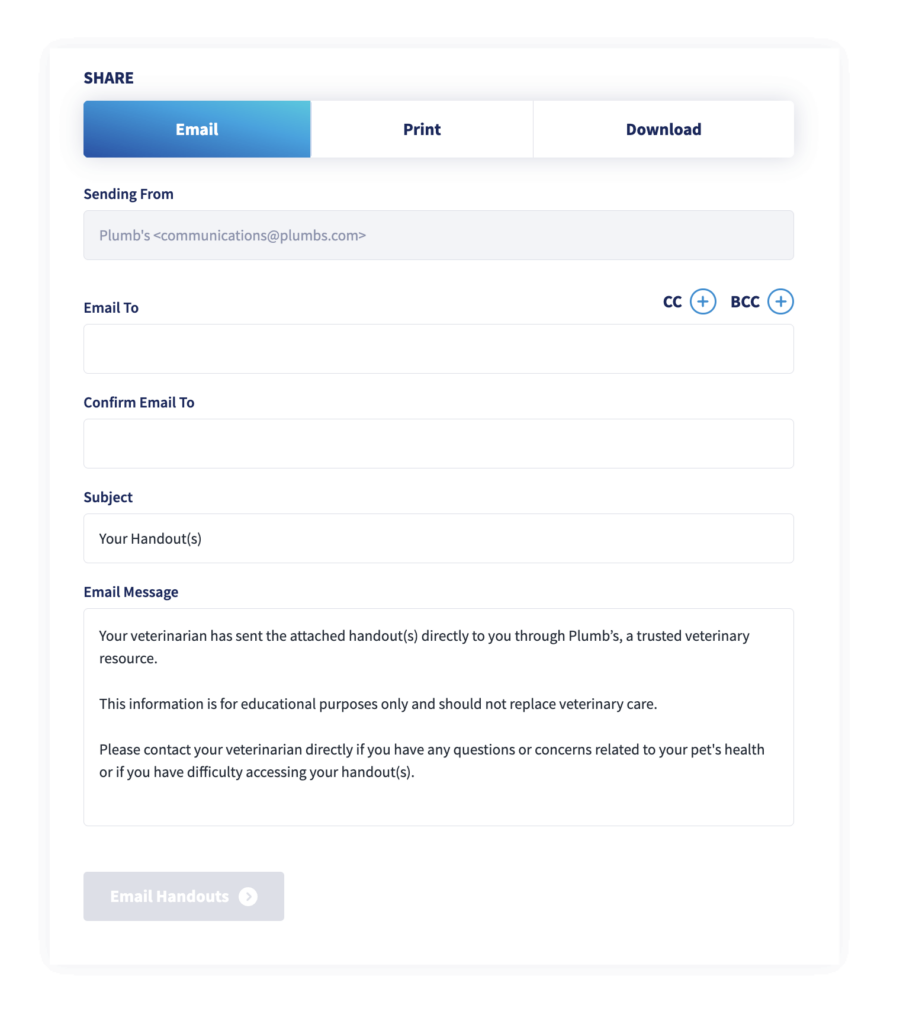
You don’t anticipate too many follow-up questions, because the handouts are written in simple language with definitions of medical terms and explanations you’re sure everyone at home will understand.
And now, Max and his owner are headed home. Max is ready for a nap, Maddy is feeling confident and ready for the next steps, and you’re on to your next patient.
This is just one simple case showing how Plumb’s Pro can solve numerous challenges you might face daily in a busy veterinary practice. It’s a powerful partner in patient care, whether you’re just starting out or you’ve been in practice for more years than you can count.
Need to see it in action? Watch a demo here.


